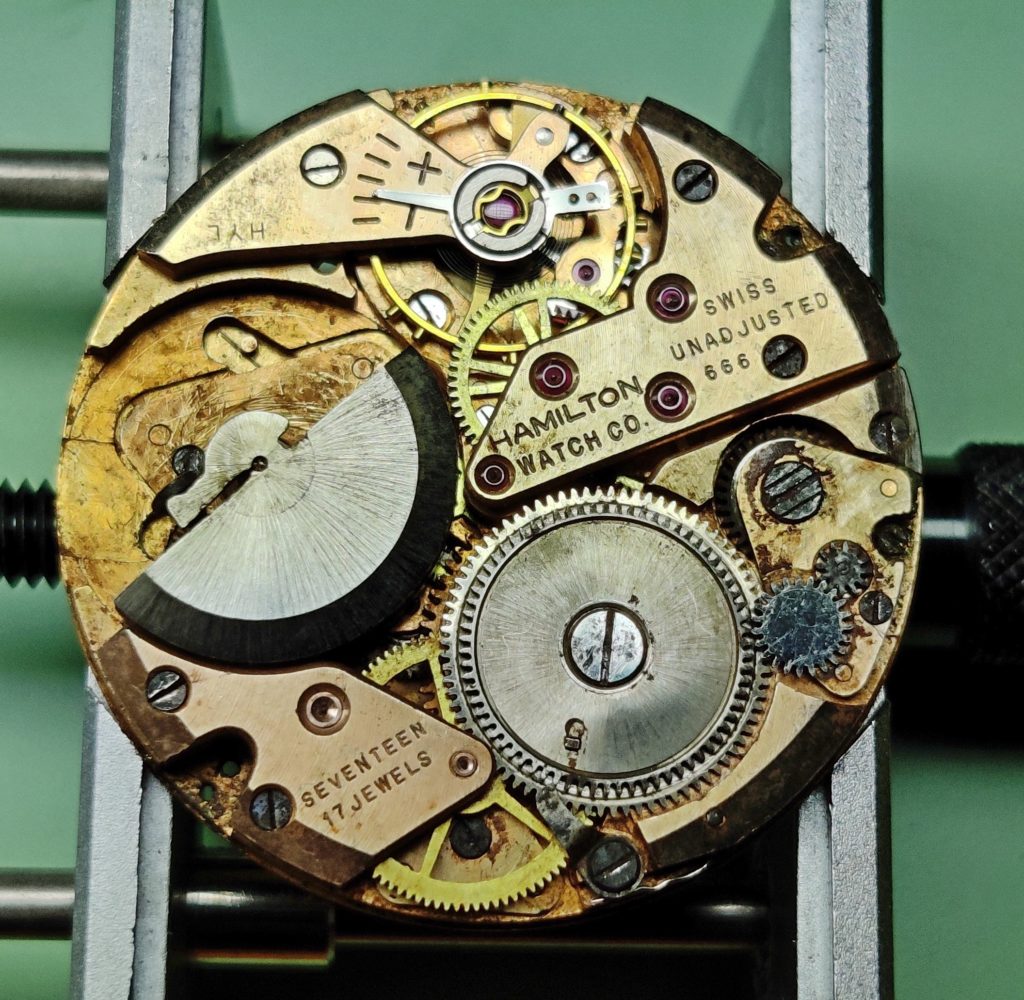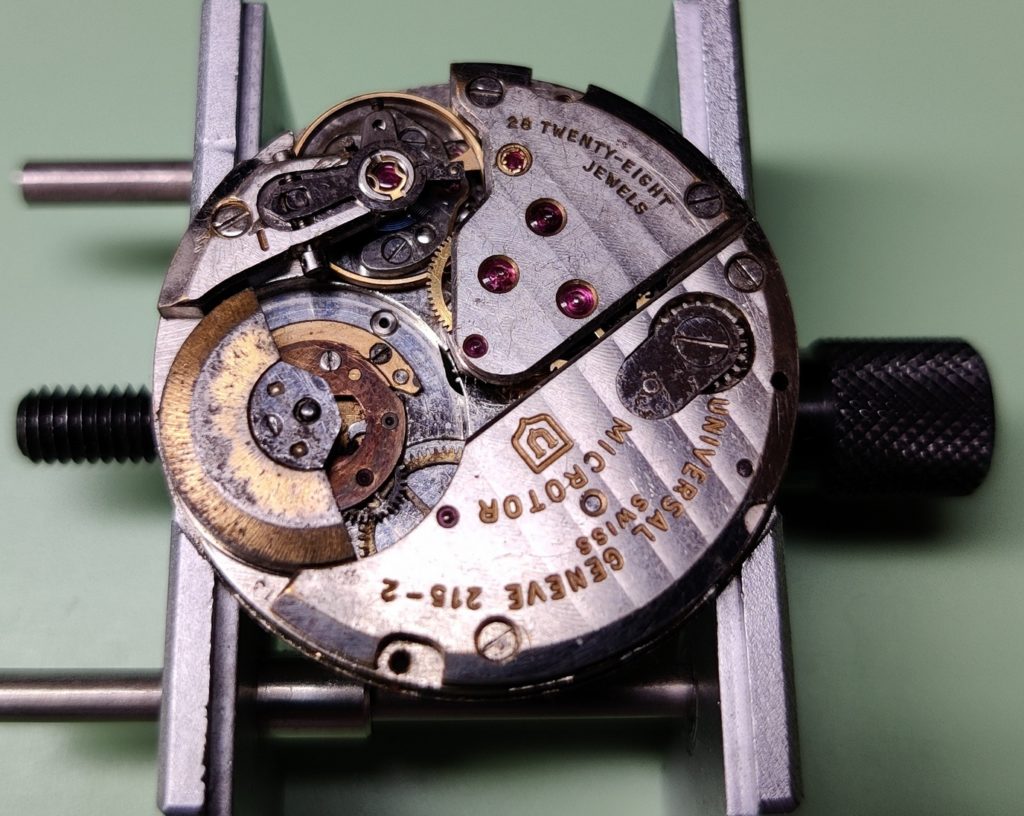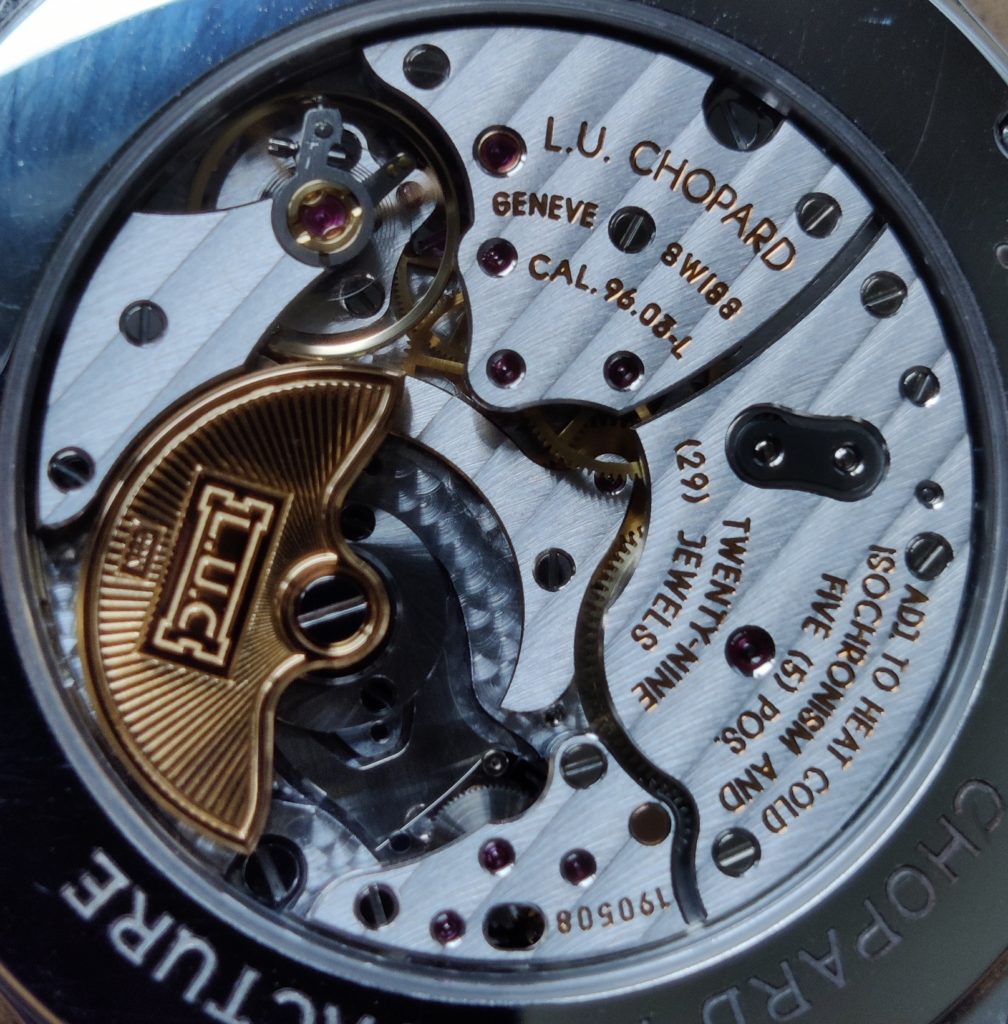
We will have a look at the differences between the following movements, you can find more details on each of them by clicking their name:
- Buren 1280 (vintage Swiss movement)
- Chopard 96.03 (modern Swiss movement)
- Hamilton 666 (vintage Swiss movement)
- Hangzhou 5000A (modern Chinese movement)
- Universal Genève 215-2 (vintage Swiss movement)
In micro-rotor movement design, there is a tension between trying to maximize the size of the micro-rotor to improve the winding power and trying to maximize the size of the balance wheel to have more inertia and therefore a more stable rate.
As can be seen in the Chopard above and the Hangzhou below, modern designers tend to choose to have a larger micro-rotor and a smaller balance wheel.
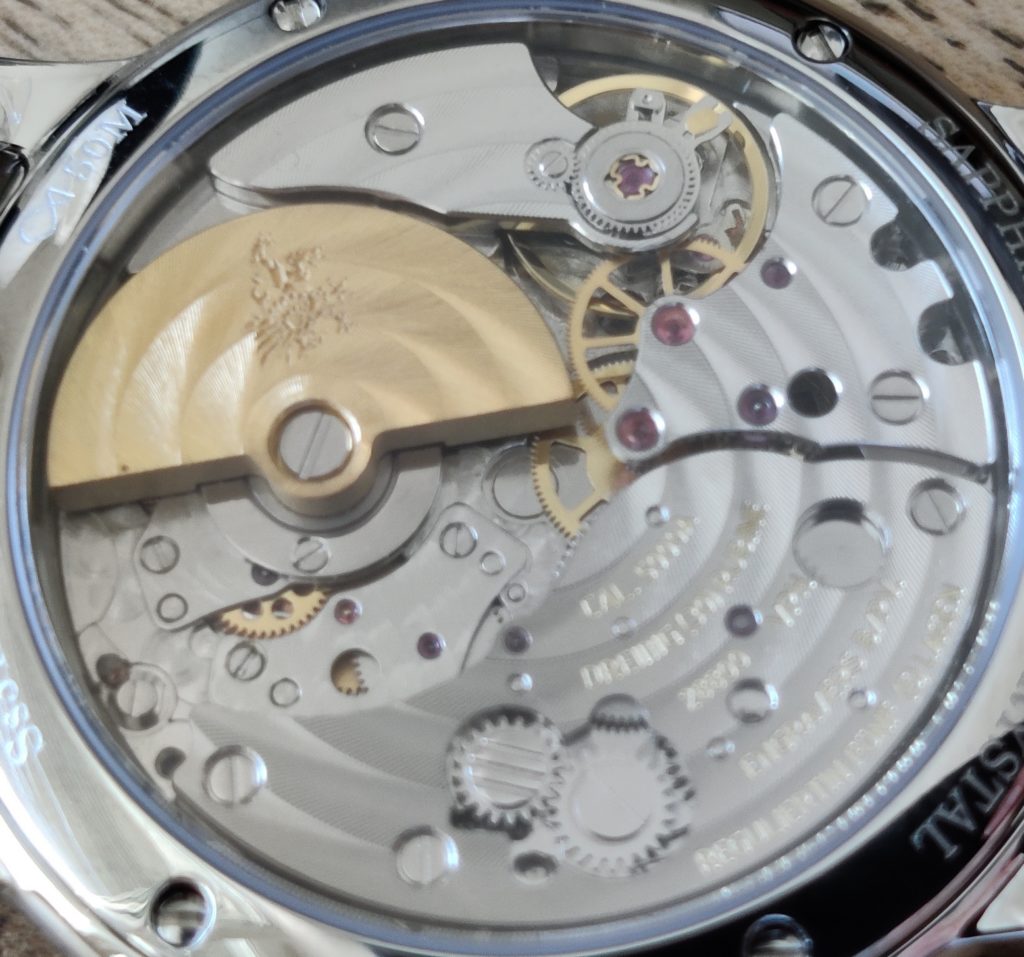
The movements listed above can be divided between those that have central seconds and those that either have sub-seconds or don’t have a seconds hand at all. Those with no central seconds (Chopard, Buren, Hangzhou) can use indirectly driven minutes (see the thematic page on this topic for details) and therefore avoid having a centre wheel, which leaves more space for both the micro-rotor and the balance wheel.
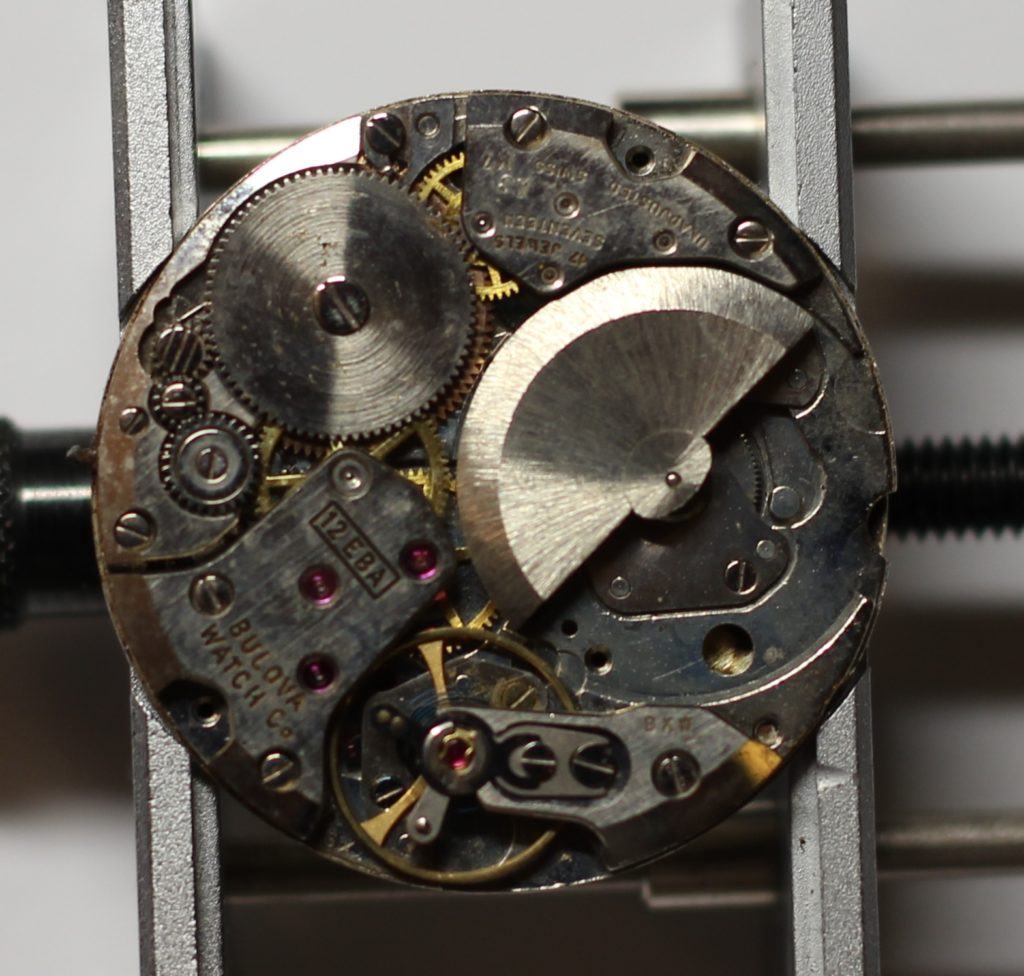
The Hamilton and the Universal Genève both have central seconds, but they have chosen different designs. The Hamilton has a centre wheel, but indirectly driven seconds, whereas the Universal has both indirectly driven seconds and indirectly driven minutes.
